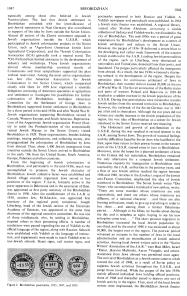

D
Encyclopaedia Judaica 1971
"Soviet Union": The Jewish story about Birobidzhan (Birobidjan) 1928-1970
How Birobidzhan was a hope for Jewish settlements and Jewish hopes were destroyed by global policy
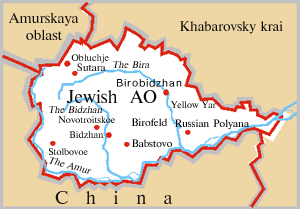

from: Birobidzhan; In: Encyclopaedia Judaica 1971, vol. 4
presented by Michael Palomino (2007)
| Teilen
/ share: |
Facebook |
|
Twitter |
|
|
|
<BIROBIDZHAN, colloquial name of the region (oblast) in the Russian S.F.S.R., for which the official designation is the "Jewish Autonomous Region" (Yevreyskaya Avtonomnaya Oblast). Part of the Khabarovsk territory (col. 1044)
(kray) in the Soviet Far East, the region is located between 47° 40'-49° 20' N. and 130° 30'-135° E.
To the west, south, and southeast, it is bordered by the Amur River, the boundary between the U.S.S.R. and Manchuria (China). Its area is 13,900 sq.mi. (36,000 sq. km.).
[Compare: Switzerland has 40,284 sq. km. Birobidzhan is almost as little as Switzerland, but with less mountains].
[General population figures 1959, 1961 and 1970]
On Jan. 1, 1961, the estimated population of the region numbered 179,000 and that of the capital, the city of Birobidzhan, 49,000. The Jewish population of the region numbered 14,269 (8.8% of the total) in 1959, of these 83.9% lived in cities and urban settlements while 16.1% lived in villages. (By 1970, the Jewish population was thought to have dropped further).
[Traffic and industry (1971)]
The capital is located on the Bolshaya Bira River and on the Trans-Siberian Railroad which cuts through the northern sector of the territory from west to east. Its industries include farm machinery, transformers, textiles, clothing and furniture.
[The climate of Birobidzhan (1971)]
The climate is influenced by the prevailing monsoons and the surrounding mountains to the west and north. It improves progressively southward, the most favorable conditions prevailing in the Amur River strip in the southern part of the region. The winter is cold and dry with little snow, spring is mild, summer is hot and humid, and fall is dry and pleasant.
[Landscape (1971)]
Birobidzhan has numerous rivers and lakes abounding with fish. Most of its area is composed of heavy soils with an excess of moisture. A considerable part consists of swamps and about one-third is covered with forest.
[Mineral and vegetable resources (1971)]
Birobidzhan has abundant mineral wealth, for the most part not commercially exploited, except for tin ores which are the basis of a large national metallurgical works, the "Khinganolovo". Grains, pulses, potatoes, vegetables, and other crops are grown.
[Circumstances in the 1920s were bad]
However, at the time when Jewish settlement began there, the region suffered from an almost complete absence of roads and land suitable for agriculture, insufficient and poor living accommodations, harsh climatic conditions, "gnus" (local name for bloodsucking insects); and unsanitary conditions.
[The factors for the Birobidzhan decision to open it for the Jews]
The Soviet decision to select Birobidzhan for Jewish settlement was influenced by several factors, the decisive one being the desire to strengthen the security of the Soviet Far East, in view of its proximity to Japan and the danger of penetration by the Chinese. The settlement of Birobidzhan became of particular importance to the U.S.S.R. after the Japanese occupation of Manchuria in 1931-32.
Since the Soviet government attempted in the late 1920s and early 1930s to improve its relations with the West, the Birobidzhan project could have also played a role in influencing Jewish and pro-Jewish public opinion there. The association of Jews with the settlement of Birobidzhan was also meant to obtain financial support from their conationals abroad, and thus alleviate the allocation of Soviet resources for this purpose.
Moreover, such settlement seemed to provide a partial solution to the economic difficulties facing Soviet nationalities. To some of those active in the *Yevsektsiya (col. 1045)
(the Jewish Section of the Communist Party), Birobidzhan seemed to constitute an ideological alternative to the Zionist idea [foundation of Great-Israel].
[The political steps about Birobidzhan: Investigation 1927 - "Jewish Autonomous Region" 1934]
The first official step toward implementation of the project was the dispatch of a scientific delegation to Birobidzhan in the summer of 1927, to investigate the feasibility of an agricultural settlement there. Its recommendations led to a resolution by the presidium of the central executive committee of the Soviet Union on March 28, 1928, to entrust Komzet (committee for settling Jews on the land) with the supervision of Jewish settlement in the region.
On May 7, 1934, the "Birobidzhan district" (rayon), which had been established in 1930, was granted the status of the "Jewish Autonomous Region" (J.A.R.), by a decree of the central executive committee.
Jewish immigration to Birobidzhan began in April 1928, and continued at a varying rate. Colonization proceeded under most difficult conditions, especially at the beginning. The first year proved particularly difficult, with heavy rains, floods, and an outbreak of anthrax (horse disease). In the following years a comparatively large number of Jewish settlers arrives in Birobidzhan.
However, the unsuitable absorption facilities and difficult climatic conditions seriously affected the rate of those who stayed there permanently. Out of prospective settlers who arrived between 1928 and 1933 more than half left.
[since 1928: Jewry is split over the Birobidzhan project]
The Birobidzhan project aroused a controversy among those active in Jewish settlement in the U.S.S.R. and among the Yevsektsiya leaders. Among the critics were Mikhail (Yuri) *Larin and Abraham Bragin, both active in the Jewish settlement movement. Larin argued that other areas of the Soviet Union, especially the Crimea, were far more suitable for Jewish colonization.
Valdheim (Valdgeym) Kolkhoz, a house is in construction 1929-1931
[But there was almost no room left on the Crimea].
The Birobidzhan project found an ardent supporter in Mikhail Kalinin, the titular head of state. In a speech delivered at a congress of the society for Jewish agricultural settlement, Ozet, in 1926, before the Birobidzhan project was born, he had declared:
Mikhail Kalinin, portrait 1919
"The Jewish people now faces the great task of preserving its nationality. For this purpose a large segment of the Jewish population must transform itself into a compact farming population, numbering at least several hundred thousand souls."
In a reception given to representatives of Moscow workers and the Yiddish press in May 1934, he suggested that the creation of a Jewish territorial center in Birobidzhan would be the only way to normalize the national status of Soviet Jews. He also expressed his hope that "Within a decade Birobidzhan will be the most important and probably the only bulwark of national Jewish socialist culture", and that "the transformation of the region into a republic is only a question of time."
The visit of Lazar *Kaganovich, a Jew [mass murderer] and member of the Politburo, to Birobidzhan in February 1936, greatly encouraged the Jewish leadership of the region.
Lazar Kaganovich, portrait [He gave the order to murder millions and to destroy many churches]
Birobidzhan aroused wide interest in world Jewry, (col. 1046)
especially among those who believed in Jewish *territorialism. The fact that Jewish settlement in Birobidzhan coincided with the intensification of anti-Jewish repressions in Nazi Germany also contributed to support of the idea by Jews outside the Soviet Union. Almost all sectors of the Zionist movement opposed it.
Jewish organizations outside the U.S.S.R. which participated in Jewish colonization projects in the Soviet Union, such as *Agro-Joint (American Jewish Joint Agricultural Corporation), and the *Jewish Colonization Association (ICA) generally took a neutral stand. The *Ort-Farband lent limited assistance to the development of industry and workshops. Those Jewish organizations abroad whose membership consisted mostly of Communists and their sympathizers supported the plan without reservation.
Among the most active organizations was Icor (the American Association for Jewish Colonization in the Soviet Union), which cooperated closely with Ozet. In 1929 Icor organized a scientific delegation consisting of American specialists in agriculture and settlement to investigate the possibilities for further colonization of Birobidzhan. Ambidjan (American Committee for the Settlement of foreign Jews in Birobidzhan) supported Jewish settlement in Birobidzhan for a short period in the mid-1930s and after World War II. Jewish organizations supporting Birobidzhan existed in Canada, Western Europe, and South America. Representatives of the Argentinian Jewish organization Procor (Society to assist the Productivization of the economically ruined Jewish Masses in the Soviet Union) visited Birobidzhan in 1929. These organizations, besides holding meetings, issuing publications, and collecting money, also propagandized the colonization of Birobidzhan by Jews from abroad.
Field work in Birobidzhan in 1931
[1930s: 1,400 Jewish immigrants in Birobidzhan]
Thus, about 1,400 Jewish immigrants from countries outside the Soviet Union arrived in Birobidzhan in the early '30s from the United States, South America, Europe, Palestine and other countries.
[1930s: Political Jewish life in Birobidzhan - Yiddish and Russian as languages]
Encyclopaedia Judaica (1971), History, vol. 8, col. 742: Birobidzhan, street scene
in the city of Birobidzhan in the early 1930s. Jerusalem, C.A.H.J.P.
From the beginning of Jewish colonization in Birobidzhan, and particularly in the mid-1930s, much was accomplished to promote the Jewish character of Birobidzhan. Jewish collective farms were established and Jewish village councils organized. Jews served in key positions of the region. Y. Levin, formerly active in the party apparatus in Belorussia and in the secretariat of Ozet, was appointed as first party secretary of the Birobidzhan district in 1930. After the establishment of the J.A.R. ["Jewish Autonomous Region"] in 1934, another Jew, M. Khavkin, was appointed first secretary of the regional party committee. Joseph Liberberg, head of the Jewish section of the Ukrainian Academy of Sciences, was appointed at the same time chairman of the regional executive committee. He was one of those intellectuals, who, by settling in Birobidzhan, inspired others in their pioneering efforts.
Encyclopaedia Judaica (1971): Birobidzhan, Band 4, Kolonne 1046: railroad station
of Birobidzhan in 1935 approx., a simple wooden house
A number of resolutions were passed regarding the use of Yiddish as the official language of the region, along with Russian. Schools were established with Yiddish as the language of instruction, and experiments were made to teach Yiddish even in non-Jewish schools. Street signs, rail stations signs, and (col. 1047)
Wooden synagogue in Birobidzhan in 1935 approx.
Postmarks of Birobidzhan in Russian and Hebrew from 1935, 1947 and 1955 [1955 only in Russian]
postmarks appeared in both Russian and Yiddish [Hebrew?]. A Yiddish newspaper and periodicals were published. In 1934 a Jewish state theater was established. A regional library, named after Shalom Aleichem [Jewish writer], containing a sizable collection of Judaica and Yiddish works, was founded in the city of Birobidzhan. The mid-1930s was a period of great expectations for Birobidzhan's development as a center of Jewish settlement and culture in the Soviet Union.
[Supplement:
Birobidzhan was foreseen from the American Joint Distribution Committee as an emigration country for persecuted Polish Jews, see the book from Yehuda Bauer about the American Joint Distribution Committee, the chapter about Birobidzhan].
[1936-1938: Stalin's purges destroy the Jewish leadership in Birobidzhan]
However, the purges of 1936-38 delivered a severe blow to the developing and rather weak framework of the nascent Jewish statehood in the J.A.R. Leading Jewish personalities of the region, such as Liberberg, were denounced as nationalists and Trotskyites, demoted from their posts, and liquidated. The purges particularly affected the immigrants from abroad. As a result, the late 1930s witnessed a shattering setback in the development of the region. Despite the optimistic plans for continuous settlement of Jews in Birobidzhan, their number did not exceed 20,000 on the eve of World War II.
[1939-1940: New projects for shifting Jews from the new western borders to Birobidzhan]
The Soviet annexation of the Baltic states and parts of western Poland and Bukovina in 1939-40 [and of Bessarabia] resulted in a sudden increase in the Jewish population of the U.S.S.R. During that period plans were initiated to transfer Jewish settlers from the annexed territories to Birobidzhan.
[The deportations were performed, but only half this wide to Siberia and concentration camps].
[1941-1945: War times with Holocaust bring new meaning to Birobidzhan]
However, the outbreak of the Soviet-German war in 1941 put a fast end to these plans. Although the war years did not witness any sizable increase in the Jewish population of the region, the very idea of Birobidzhan as a center for Jewish statehood in the Soviet Union received new meaning. The Holocaust and growth of anti-Semitism in the U.S.S.R. during the war resulted in revived interest in the J.A.R. among Soviet Jews. The growth of national feelings and the difficulties faced by Soviet Jews who had fled to the East, upon their return to their prewar homes in the western parts of the U.S.S.R. caused some to turn to Birobidzhan.
[Supplement: Birobidzhan just had a big luck not have been occupied by Japanese troops
Birobidzhan was not hit of the war because of the Japanese government which made a non-aggression pact with Stalin on 13 April 1941 after Hitler's pact with Stalin in August 1939. When Hitler's plan had been put into action to heckle the Soviet Union from the European and from the Japanese side Birobidzhan's Jewish population had experiences harsh Japanese anti-Semitic rule like in Indonesia or in other parts of Japanese occupation. So it was a big luck that Birobidzhan was not hit by Japanese rule.
See: Valentin Falin: Second Front (1995)].
[1945-1948: Big stream of Jewish settlers to Birobidzhan]
Moreover, since the hopes for a planned settlement of Jews in the Crimea did not materialize, Birobidzhan remained the only alternative for a compact Jewish settlement. Numerous requests for immigration to Birobidzhan were received by the J.A.R. authorities in the postwar years, and a flow of new Jewish settlers reached the region between 1946 and 1948. Articles in the Eynikayt, organ of the Jewish anti-Fascist Committee, emphasized the idea of Jewish statehood in Birobidzhan. The Soviet Jewish writer *Der Nister, who accompanied a trainload of new settlers, wrote:
"There are some travelers whose intentions are only materialistic, and there are others whose intentions are different, of a national character ... and there are also burning enthusiasts, ready to give up everything in order to live there ... and among them a former Palestinian patriot, ... Although in his fifties, he hustles about during the day and is sleepless at night, hoping to see his new enterprise come true. ... "
The short postwar migration to Birobidzhan increased the local Jewish population by one-third [by one half, from 20,000 to 30,000], and by the end of 1948 it was estimated at about 30,000, the largest ever in the region. The postwar period witnessed an increase in the number of Jews in the local administration and an intensification of Jewish cultural activities. Among local Jewish writers active in the "Soviet Writers' Association of the J.A.R." were Buzi Miler, Israel *Emiot, Hayyim Maltinski, Aaron *Vergelis, and others. Assistance from Jews abroad was permitted once again.
[since 1948: "Soviet" anti-Jewish policy suppressing Jewish networks in the "Soviet Union"]
Map of Jewish Autonomous Region (Jewish AO) with Birobidzhan and other towns and rivers, 2000 approx.
The revival of Birobidzhan as a Jewish center came to a halt toward the end of 1948, as a result of Soviet policy to suppress Jewish activities throughout the U.S.S.R., and purge those involved. While the purges of the late 1930s mainly affected individual Jews holding official positions, those of 1948 and thereafter aimed to destroy any sort of Jewish activity in the region. Thus, most of the local Jewish writers were imprisoned, the Birobidzhan Jewish theater (col. 1048)
was closed, the teaching of Yiddish in local schools was discontinued, and a great number of Yiddish books were removed from the Shalom Aleichem Library. Jewish immigration to Birobidzhan ceased, and its Jewish population shrank considerably.
[Supplement: Reasons for the new anti-Jewish policy in Moscow: Israel is going with CIA and "USA"
The change of "Soviet" policy came because the Jewish government of Israel with Ben Gurion and his Free Mason war friends had not only proclaimed an Israel without borders (see: Israel; In: Encyclopaedia Judaica, Vol. 8), but this new Israel had racist Herzl and the First Mose as its base with the claim of a Great Israel to the Euphrates. The Jewish government also clang together with the CIA from the Free Mason "USA", so the "Soviet Union" felt politically encircled by Free Mason "USA" with Western Europe, Israel, India and Japan. The encircling situation of before with Hitlers Third Reich and Japan was repeating. All support of the "Soviet" regime in the UN for the foundation of Israel, and all hopes that Israel would be a "Soviet" satellite state were for nothing, and so the Jews in the "Soviet Union" were the compensational culprit. The Jews in the "Soviet Union" were now considered as an enemy nationality in the own country and at the same time they were forbidden to leave the country (Iron Curtain), because their manpower was strongly needed for the reconstruction of the "Soviet Union". Jewish structures were destroyed by sovietization - step by step - with anti-Semitic propaganda campaigns, mass arrests of Jewish representatives, gulag penalties, schools shut down, synagogues blamed as capitalist espionage centers and so on.
See: Benjamin Pinkus: The Soviet Government and the Jews].
[1953-1970: Russians take over Birobidzhan - Jews are a little minority]
The post-Stalin period did not bring any substantial changes to Jewish life in Birobidzhan. Jewish inhabitants comprised less than one-tenth of the general population of the region in 1959, party and administrative positions were not generally held by Jews, and Jewish agriculture was almost nonexistent. The sole kolkhoz with a comparatively large Jewish membership is that of Valdheim in the vicinity of the capital; but it is now only a branch of the large kolkhoz "Ilich's Wills" and its Jewish population is diminishing. Such key positions as secretary or chairman of the local party regional and district committees (the region is divided into five administrative districts) are generally not held by Jews although in 1970 Lev Shapiro was appointed first secretary of the regional Communist Party organization. Of the five deputies to the Council of Nationalities of the U.S.S.R. only a minority is Jewish. The sole expression of Jewish cultural activity in 1970 was a two-page Yiddish newspaper, Der Birobidzhaner Shtern, nearly devoid of all Jewish content, which appeared three times weekly and had a circulation of 1,000. There were also a few street signs in Yiddish, and Shalom Aleichem Street remained one of the thoroughfares of the capital. There was one synagogue. All official and public business was conducted exclusively in Russian.
Bira River
N. S. Khrushchev, Soviet premier and first party secretary, stated in an interview for Le Figaro, which appeared on April 9, 1958, that
"It must be admitted that if we strike a balance we would have to state that the Jewish settlement in Birobidzhan was a failure."
He further put the blame for it upon the Soviet Jews, who, according to Khrushchev, never liked collective work and group discipline. It is difficult to ascribe the failure of the Birobidzhan experiment to one single cause. In the history of the Jewish people it belongs to the series of other futile attempts at planned Jewish mass settlement, based on agriculture, whose failure is often attributed to its implicit or explicit negation of the ultimate return to Zion.
However, viewed in the context of Soviet Jewish reality, the immediate cause of its failure was undoubtedly the fact that twice, in 1936-37 and in 1948-49, the Stalinist purges put a (col. 1049)
brutal end to the short periods of developing a Jewish autonomous life and culture in Birobidzhan.
Table: Jews in the Jewish Autonomous Republik (Birobidzhan, Birobidjan)
Year
number of Jews
xxxxxx1928xxxxxx xxxxxxxxxxxxxxxxxxxxxxxxxxxxxxxx400xxxxxxxxxxxxxxxxxxxxxxxxxxxxxxxxxx xxxxxx1929xxxxxx xxxxxxxxxxxxxxxxxxxxxxxxxxxxxx1,200xxxxxxxxxxxxxxxxxxxxxxxxxxxxxxxxxx xxxxxx1930xxxxxx xxxxxxxxxxxxxxxxxxxxxxxxxxxxxx2,600xxxxxxxxxxxxxxxxxxxxxxxxxxxxxxxxxx xxxxxx1931xxxxxx xxxxxxxxxxxxxxxxxxxxxxxxxxxxxx3,500xxxxxxxxxxxxxxxxxxxxxxxxxxxxxxxxxx xxxxxx1932xxxxxx xxxxxxxxxxxxxxxxxxxxxxxxxxxxxx7,000xxxxxxxxxxxxxxxxxxxxxxxxxxxxxxxxxx xxxxxx1933xxxxxx xxxxxxxxxxxxxxxxxxxxxxxxxxxxxx6,000xxxxxxxxxxxxxxxxxxxxxxxxxxxxxxxxxx xxxxxx1934xxxxxx xxxxxxxxxxxxxxxxxxxxxxxxxxxxxx8,000xxxxxxxxxxxxxxxxxxxxxxxxxxxxxxxxxx xxxxxx1935xxxxxx xxxxxxxxxxxxxxxxxxxxxxxxxxxxx14,000xxxxxxxxxxxxxxxxxxxxxxxxxxxxxxxxxx xxxxxx1936xxxxxx xxxxxxxxxxxxxxxxxxxxxxxxxxxxx18,000xxxxxxxxxxxxxxxxxxxxxxxxxxxxxxxxxx xxxxxx1937xxxxxx xxxxxxxxxxxxxxxxxxxxxxxxxxxxx19,000xxxxxxxxxxxxxxxxxxxxxxxxxxxxxxxxxx xxxxxx1945xxxxxx xxxxxxxxxxxxxxxxxxxxxxxxxxxxx20,000xxxxxxxxxxxxxxxxxxxxxxxxxxxxxxxxxx xxxxxx1948xxxxxx xxxxxxxxxxxxxxxxxxxxxxxxxxxxx30,000xxxxxxxxxxxxxxxxxxxxxxxxxxxxxxxxxx xxxxxx1959xxxxxx xxxxxxxxxxxxxxxxxxxxxxxxxxxxx14,269xxxxxxxxxxxxxxxxxxxxxxxxxxxxxxxxxx (from: Birobidzhan; In: Encyclopaedia Judaica 1971, Vol. 4, col. 1049)
Bibliography
-- S. Schwarz: The Jews in the Soviet Union (1951), index; idem, in: J. Frumkin (ed.): Russian Jewry 1917-1967 (1969), 342-95
-- A. L. Eliav (Benami): Between Hammer and Sickle (1969), 176-88
-- S. W. Baron: The Russian Jew under Tsars and Soviets (1964), index;
-- J. Lvavi: Ha-Hityashevut ha-Yehudit be-Birobidzhan (1965)
-- A. G. Duker: Jewish Survival in the World Today (1939), 47-59; idem, in: Contemporary Jewish Record (March-April 1939), 24-26
-- J. Emiot: Der Birobidzhaner Inyen (1960); Jews in Eastern Europe (1966ff.), index;
-- Z. Katz, in: Bulletin on Soviet Jewish Affairs, 2 (July, 1968)
-- C. Abramsky, in: L. Kochan (ed.): Jews in Soviet Russia since 1917 (1970), 62-75 (incl. bibl.)
[J.Lv. / Shi.R.]>
Birobidzhan today
Birobidzhan today is a stop of the Trans-Siberian Railway.
(http://www.transsib.ru/Eng/city-dvost.htm (2007)
The town Birobidzhan has 87,000 inhabitants. The medium temperatures are in April +3, July +20, October +2, and January -22 degrees Celsius.
(http://www.trans-sib.de/city-dvost.htm (2007)
News
19.8.2010: Remarks by Jurij Below about Birobidzhan (JASSR / JSSAR)
E-mail by Jurij Below from 19 August 2010 (European time), revised by Michael Palomino
From:
To:
"Michael Palomino" <michael.palomino@gmx.ch> Subject:
Re: Frage: "jüdische ASSR" = Birobidschan? Date:
Thu, 19. Aug 2010 00:46:19
Column with the name "Birobidzhan" in Cyrillic and in Hebrew writing
Birobidzhan in Russia, map of 2010
Jurij Below is giving a little political summary about Birobidzhan. With this is coming out:
-- the tsars already expelled Jews to the territory of Birobidzhan
-- Lenin let destroy all Jewish structures there
-- during the war from 1918 to 1921 about 1/3 of the Jews fled to Charbin and partly to "USA", another part were between the White and the Red Army and partly were killed, and Jews who had stayed in Charbin were re-deported and partly murdered or put into GULAG
-- in 1929 Stalin founds a new JSSAR and bans masses of Jews there
-- in 1949 a gold scandal with gold of Kolyma is coming out where the Jewish organizers of the Gulag branched off masses of gold to China and Japan. As a consequence Birobidzhan republic is resolved, the local government and 30.000 other Jews are completely shot and the rest of the Jews is fixed in Birobidzhan
-- there follow three waves of persecutions of the Jews with about 1.5 million lethal victims
-- then there is another foundation of a JSAG with Khrushchev in 1961, but under Brezhnev autonomy is abolished again, under Jelzin there is installed another one, and under Putin it's abolished again etc.
The text of Jurij Below:
[The rivers Bira and Bidzhan]
<Birobidzhan is the region of the tributaries of Amur River, Bira and Bidzhan, about 150 km in the West of Khabarovsk, the capital of former JSSAR (Jewish Soviet Socialist Authonomous Republic), which was named like this from 1929 to 1947.
[First expulsion of Jews to Birobidzhan region under tsar Ivan IV - under tsar Alexander III Jews in Birobidzhan get civil rights]
In fact the first Russian Jews were forced to go there by tsar Ivan IV Grozny (the "Cruel"), coming from Moscow and Central Russia. In 1880 tsar Alexander III tried to solve the problem of the status of the republic with the governor of Siberia, General Skobelew. This status was not cleared because the Jews there had tried two times establishing themselves as the State of the Jews. Under the condition that they will leave their dream they got civil rights of Russian Empire.
[War of 1904 - Birobidzhan with 300.000 Jews is going on being Russian]
In 1904 Russia conducted war against Japan because of Manchuria (this was the last state of the Mandarines with the capital of Harbin and with the last emperor Pui Ji who had a claim to Birobidzhan). Now, the Russian fleet suffered a great defeat there, but tsar Nicolas II signed a peace treaty there with Pui Ji in Port-Arthur, and the "Jewish province of Russia" stayed with Moscow protection because Chinese and Japanese systematically organized "pogroms" against Jews. In St. Petersburg tsar Nicolas II guarantied Jewish autonomy (these were 300.000 Jews in these times).
[1917: Lenin lets eliminate the Jewish structures in Birobidzhan and lets prohibit Hebrew]
During the second day of takeover of power by Bolsheviki in 1917 Lenin let eliminate the "reactionary Jewish structures in Eastern Siberia", and his decree no.3 prohibited Hebrew (Iwrith) because it was qualified as a "reactionary language".
[Persecution of the Jews 1918-1921: Flight of about 100.000 to Charbin and to USA - mass murder at the staying 100.000]
During the "civil war" from 1918 to 1921, so, during Red Terror, Jews were persecuted systematically by White and Red Army, so there stayed only about 100.000 Jews there (almost 100.000 fled to Harbin [Manchuria] and fled then to Shanghai, Hongkong and USA. The rest of over 100.000 Jews were between the warmongers and killed (Russian White Army and Bolshevik Red Army). One can really speak of a will of extermination which was in these two Russian armies. Supreme Commander of Russian army, admiral Koltshak, was detained by Bolsheviki, and Lenin gave the message to Khabarovsk: "Suddenly put to trial and be shot".
[Soviet occupation of Harbin - redeportation of the staying Jews and shooting or GULAG]
The Soviets occupied Harbin and the Jews having stayed there were redeported to USSR and were executed because of being "spies or traitors of the country", or had to go into GULAG for 25 years.
[Stalin tried expelling the rest of the Jews to Kazakhstan - foundation of JSSAR in 1929 - mass ban to Birobidzhan]
After Lenin's death Stalin tried to expell the Jews from the border region to Kasakhstan and especially to Bukhara and to Samarkand, because he wanted to safe the town of Vladivostok against Korea and occupied Te Tju Che (wild pig forest). Khabarovsk should be safe from Chinese. Near Chal Kin Gol (Taiga of Ussuri Tiger) Stalin occupied a big part of Manchuria and also Port Arthur (Port Arthur was given back to China in 1961 only, to Khrushchev). The war in the East under Stalin was during three years (1926-1929), and after this there was the JSSAR foundation, as a part of USSR. Iwrith [Hebrew] was going on to be forbidden, but Yiddish was accepted. In the following times Stalin let ban lots of Jews to Birobidzhan, so there were living over 600.000 Jews there in 1940.
In 1947 all Jewish organizations in the whole USSR were forbidden. In 1948 [after the foundation of Herzl Israel and by the alliance between the racist Zionist government with the CIA] JSSAR was dissolved - which had named itself "Republic of the Jews" illegally. Now it was called "center of reactionary Zionists and agents of world wide imperialism".
[The gold scandal of Birobidzhan (1949) and elimination of the Jewish republic]
Then in 1949 there was a big "conspiracy" with illegal gold transports from Kolyma coming out, in the second largest town [of Birobidzhan province], Smidovitsh: In JASSR at the Chinese border gold of Kolyma was refined and found to gold bars. There were over 10,000 Jewish Gulag employers ("Zionists") controlling the Russian Gulag slave workers. And these Jewish Gulag employees had "branched off" a big part of the gold from Moscow by China and Japan. This scandal had consequences: Birobidzhan was completely desolved. In 1949 37 government members and over 30,000 "enemies of the folk" of the Jewish population were shot in Khabarovsk [at the Eastern border of Birobidzhan]. The rest was officially declared banned on the spot and they were denied to move out from the territory. By contrast the Russian Gulag detainees had to celebrate any time when another group of the Jewish government was brought to Khabarovsk for being shot.
[This gold scandal in Birobidzhan is missing in the work of Pinkus].
[1950s: Persecution of the Jews in three waves]
Now there was a mad orgy of kin liability in Russia - these were the last three waves of the persecution of the Jews. Prof. Dmitri Kurganow (historian, not a Jews, but also having passed 25 years in Gulag because of anti soviet propaganda) estimates the number of the victims by Stalinist measures against agents, treaters and Zionists of at least 1.5 million.
[Khrushchev installs a new JSAG]
In 1961 Nikita Khrushchev installs another "Jewish Soviet Autonomous Territory" (JSAG) and let force migrating Jews there who had lived in Usbekistan and Kasakhstan. And after some time there were again 300.000 Jews living in this territory.
[Brezhnev lets abolish autonomy again - stays a "Jewish county"]
In 1966 - after dismissal of Khrushchev and takeover of power by Leonid Brezhnev - the formal autonomy was also abrogated yet. So, there stayed only a Jewrejskaja Oblast ("Jewish County") within Khabarovsk province up to the end of USSR.
 President Medvedev visiting Jewish autonomous republic of Birobidzhan "promising more engagement for the forgotten land of the Jews"
President Medvedev visiting Jewish autonomous republic of Birobidzhan "promising more engagement for the forgotten land of the Jews"
(News of St. Petersburg", May 2010)
[1992: Name "Republic of the Jews" (JR) and flag of JR are forbidden - Jelzin giving autonomy again - Putin forbidding all again - new name and new flag in 2001 - prohibition of the new flag in 2005 and latest flag with rainbow colors]
In 1992 Birobidzhan declared itself as "Republic of the Jews". Moscow did not accept this name because of the protest of Israel claiming that this name had been used by "anti-Semites" in Weimar Republic times. JR state's flag with a star of David was forbidden. But Duma (parliament) under Boris Jelzin declared again the territory to the "Jews" in 1994 with autonomy. After death of Jelzin Vladimir Putin revoked all, the official flag, the insignia, and national anthem, and add to this menaced "to expel the Jews from this territory definitely". In 2001 Duma at last gave a new official name, this was "Jewish autonomous territory of Russian Federation" with a Russian state's flag with a star of David. In 2005 also this resolution was revoked ant the flag was forbidden. The new flag reminds of the rainbow flag of homosexuals. The new name of the republic is "Jewish autonomous territory".
[The "official web site" keeps quiet - Khabarovsk is Jewish center - remigration to Birobidzhan]
On the web site of Jewish autonomous Territory is not mentions one single word about Lenin's decrees, not one single word about the always changing status of the "territory" and about Stalin's order of 1948 for the liquidation of the republic of the Jews in the "processes of Khabarovsk", and about the shootings of the government in Khabarovsk in 1949. This is the only territory in USSR where the terms "Stalinka", "Leninogorsk", "Komsomolskja", "Sowjetsk", and also "WKP /b/ Communist party" (Bolshevik) are existing yet.
This is really strange: Now there live 48% Chinese, 49% Ukrainian and Russians, and about 12,000 Jews. In January about 600 Jews were remigrating from Israel back to Birobidzhan. For Moscow itself this territory has a "great strategic significance" (Wolf Shirinovski).
The Jews in Birobidzhan are making jokes: "Lenin, Stalin, Breschnew, Shirinovski and also Netanajahu - they all are against us, only Adolf Hitler never harmed us. Who we will love?" The answer: "... of course, or not?"
"Ejnigkejt" (newspaper in Yiddish [of Russian Jews]) from 15 August 1910 was ranging Netanyahu at the same level with Stalin.
So, historically seen Birobidzhan is the first Jewish state since the pogrom of Emperor Titus at 70 after Christ. Then Israel joined, but both Jewish states have not find any calm yet. And above all there are always changes of names in Birobidzhan. Always the name is changed...>
========
Picture credits
-- map with position of Birobidzhan province: http://elcomandante.wordpress.com/2007/01/09/provincia-autonoma-hebrea-rusia-birobidzhan/-- map of Birobidzhan province with towns 2000 approx.: http://map.rin.ru/cgi-bin/main_e.pl?Region=evrei
-- map of Birobidzhan province with neighbour provinces: http://vladivostok.usconsulate.gov/wwwhgeninfo.html
-- map of Birobidzhan province with Hebrew letters and relief 1930 approx.:
http://www.2all.co.il/web/Sites/yiddishproject/PAGE4.asp http://www.2all.co.il/web/Sites/yiddishproject%5C15005_(13).jpg
-- map of Birobidzhan with Trans-Siberian Railway:
http://news.bbc.co.uk/1/hi/world/europe/1978082.stm; http://www.transsib.ru/Eng/cat-map.htm
-- flag of Birobidzhan province: http://es.wikipedia.org/wiki/%C3%93blast_Aut%C3%B3nomo_Hebreo
-- emblem of Birobidzhan province: http://es.wikipedia.org/wiki/%C3%93blast_Aut%C3%B3nomo_Hebreo
-- kolkhoz "Valdheim" housing construction work 1929-1931:
http://international.loc.gov/cgi-bin/query/h?intldl/mtfront:@OR(@field(NUMBER+@band(mtfxtx+na0025)))
http://international.loc.gov/cgi-bin/ampage?collId=mtfxtx&fileName=txn/na0025//mtfxtxna0025.db&recNum=0 &itemLink=r?intldl/mtfront:@field(NUMBER+@od1(mtfxtx+na0025))&linkText=0&presId=mtfront
http://international.loc.gov/service/ndlpcoop/mtfxtx/txn/na0025/0001.jpg
-- Mikhail Kalinin, portrait 1919: http://en.wikipedia.org/wiki/Mikhail_Kalinin
-- Lazar Kaganovich, portrait with cap: http://seanbryson.com/articles/prop_masters.html
-- field work in Birobidzhan in 1931: http://www.newswe.com/Atlant/atlant1.htm
-- wooden synagogue in Birobidzhan: http://www.hagalil.com/galluth/russia12.htm
-- river Bira: http://news.bbc.co.uk/1/hi/world/europe/1978082.stm
-- Birobidzhan railway station with Russian and Hebrew letters 1998 01: http://www.transsib.ru/Eng/city-dvost.htm;
http://www.transsib.ru/Photo/Dvost/8351.jpg
-- Birobidzhan railway station with Russian and Hebrew letters 1998 02: http://www.transsib.ru/Eng/large-st.htm
http://www.transsib.ru/Photo/Dvost/8351a.jpg
-- Birobidzhan railway station with Russian and Hebrew letters 2002 ca., 03 zoom:
http://news.bbc.co.uk/1/hi/world/europe/1978082.stm
-- Birobidzhan railway station, locomotive with Communist star: http://wadescott.com/transi/Week-4-Birobizhan.shtml
-- Birobidzhan Jewish culture center: http://www.euras.co.jp/chi_kibetsu_info/khabarovsk.htm
-- Birobidzhan synagogue 2002: http://news.bbc.co.uk/1/hi/world/europe/1978082.stm
-- new Birobidzhan synagogue 2004 01, house front: http://wadescott.com/transi/Week-4-Birobizhan.shtml
-- new Birobidzhan synagogue 2004 02, hall:
http://blogs.washingtonpost.com/russianchronicles/2005/09/birobidzhan_new.html
-- rabbi Mordechai Sheiner since 2002:
http://blogs.washingtonpost.com/russianchronicles/2005/09/birobidzhan_new.html
-- residential district of Birobidzhan 2004 approx.: http://wadescott.com/transi/Week-4-Birobizhan.shtml
-- central square 2005 approx.: http://en.wikipedia.org/wiki/Birobidzhan
-- Jewish cemetery Birobidzhan 2005 approx.:
http://www.2all.co.il/web/Sites/yiddishproject/; http://www.2all.co.il/web/Sites/yiddishproject/15005_(15).jpg
-- Yiddish summer school 2007 in Birobidzhan: http://www.2all.co.il/web/Sites/yiddishproject/CATALOG.asp
-- Birobidzhan, sunset on Bira River: http://www.eao.ru/eng/?p=724&PHPSESSID=;
http://www.eao.ru//Images/Gorod/gen_029.jpg
-- steppe: http://www.jbryant.eu/siberia.htm; http://www.jbryant.eu/trans-sib/112.jpg
-- Smidovich railway station 1998 approx.: http://www.transsib.ru/Photo/Dvost/8422.jpg
-- Khabarovsk with bridge over Amur river 1998 approx.:
http://www.transsib.ru/Eng/large-st.htm; http://www.transsib.ru/Photo/Dvost/8512.jpg
Jewish names of Birobidzhan, website:
http://www.2all.co.il/web/Sites/yiddishproject/PAGE9.asp
History of Birobidzhan details, website:
http://www.eao.ru/eng/?p=361
^

![Postmarks of
Birobidzhan in Russian and Hebrew from 1935, 1947 and
1955 [1955 only in Russian] Postmarks
of Birobidzhan in Russian and Hebrew from 1935, 1947 and
1955 [1955 only in Russian]](EncJud_Birobidzhan-d/008-poststempel-v-Birobidzhan-1935-1947-1955-25pr.jpg)
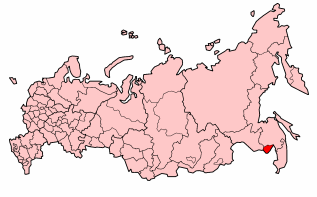
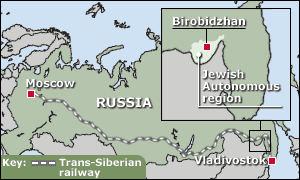



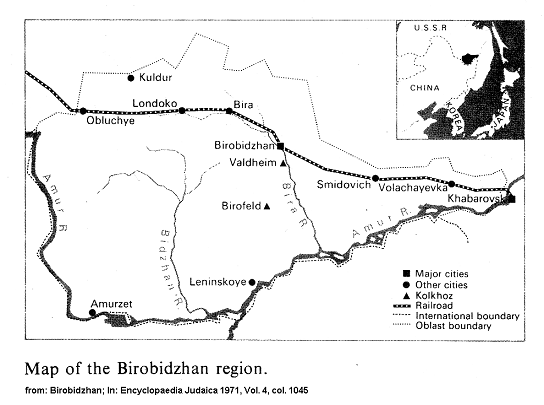


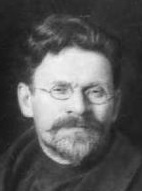
![Lazar Kaganovich, portrait [He
gave the order to murder millions and to destroy
many churches] Lazar Kaganovich, portrait [He gave
the order to murder millions and to destroy many
churches]](EncJud_Birobidzhan-d/005-Lazar-Kaganovich-portrait.gif)




![Postmarks of Birobidzhan
in Russian and Hebrew from 1935, 1947 and
1955 [1955 only in Russian] Postmarks of Birobidzhan in Russian and
Hebrew from 1935, 1947 and 1955 [1955 only
in Russian]](EncJud_Birobidzhan-d/008-poststempel-v-Birobidzhan-1935-1947-1955-55pr.jpg)



